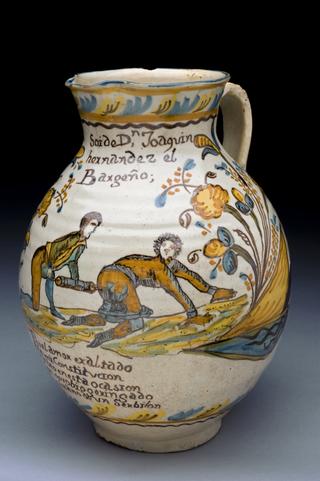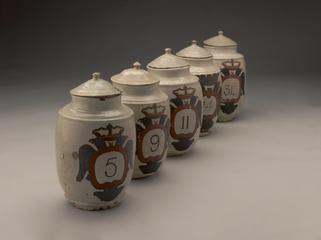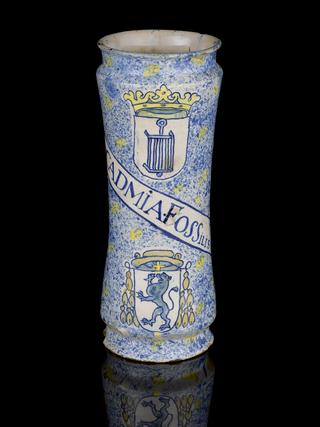




Albarello vase, 17th or 18th century Italian, (Naples or Castelli) blue and white maiolica, scene of monk and vision of crucifixion, for sanicle
The jar on the right was used to store Sciroppo di Sannicola, Latin for “Syrup of Sanicle”. Sanicle is a herb related to parsley and was mixed with sugar to make a syrup. The plant’s name is Latin for “healthy”. The syrup was taken by the spoonful to heal internal ulcers, especially in the kidneys and bladder.
St Francis of Assisi (c. 1181-1226) is shown on the drug jar receiving the stigmata from heaven. His stigmata, which are said to have appeared in 1224, were the first recorded instance of the phenomenon. He received the stigmata in recognition of the difficulty of setting up his religious order, the Franciscans. The jar is shown with a similar example for syrup of sanicle (A42625).
Details
- Category:
- Medical Ceramic-ware
- Collection:
- Sir Henry Wellcome's Museum Collection
- Object Number:
- A42624
- Measurements:
-
overall: 260 mm 109 mm, 1.12 kg
- type:
- drug jar


